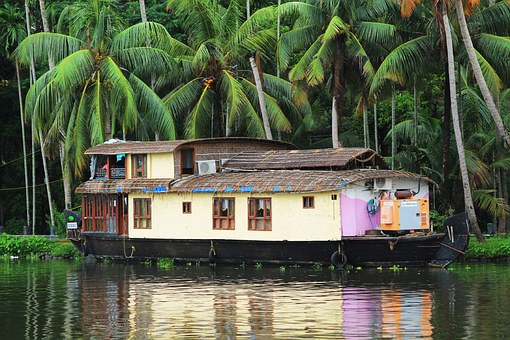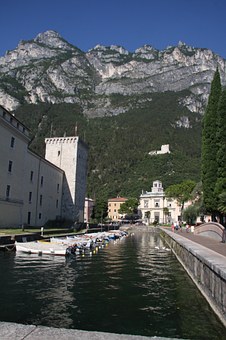Picking The Right Boat Configuration

Choosing the right configuration or deck layout for your preferred boating activity is just as important as choosing the right hull shape
. Some configurations are much better suited to certain activities than others, so it is important to get it right from the outset.The Runabout
The runabout consists of a short forward windscreen with forward steering, twin pedestal seats or back-to-back seats, along with at least two rear passengers seats, normally situated in the transom corners.
Like the console configuration, the runabout has plenty of open interior deck space, making it ideal for recreational skiing, bay fishing and cruising.

Runabouts have very low windscreens and are designed to be driven from a seated position, with the seating well forward towards the bow. This tends to lead to very limited crew protection and an impractical helm driving position. Running a runabout through choppy seas can be uncomfortable, especially in harder riding aluminium boats. With some boats you can stand at the helm, but this usually leaves you completely exposed to the wind and spray. Fitting a bimini top can solve this problem, but because the windscreen is mounted down low, it is then impossible to stand at the helm.
Despite these criticisms, the runabout is a good choice for beginners because it is versatile enough to perform pretty well in a variety of inshore and estuary boating applications. For offshore work however, I'd look for a configuration with more protection from the elements.
The Console
There are two types of console, the centre console and side console. Each refers to the positioning of the console. The most popular is the centre console as the weight distribution of the helm station and driver in the middle of the boat and can be positioned in the optimum position fore and aft to provide the best ride and performance characteristics for that boat. Most side consoles are found on wider bodied craft or on catamarans, in instances where the weight on the side will not cause the boat to lean precariously to one side.
Console boats are a preferred choice of many inshore and estuary fishermen, particularly in the warmer areas of Australia. The console itself provides a handy helm station on which instrumentation such as sounders and GPS units can be housed while providing a little protection to the driver. It does this while taking up minimal room with in the boat, leaving plenty of room to fish or work every area from bow to stern.
In southern, colder climates, the lack of protection becomes a problem. Travelling or sitting at anchor, the cold winds can make console boating very cold. If the boat spray can be an issue although rain need not be an issue as binimis work well on console boats and are very handy keeping both sun and rain away.
If you didn't have to worry about the cold or getting some spray, as many in the tropics and warmer climates dont, then the console is the perfect layout for fishing. With only a small helm console unit to interrupt the deck space in a console, there is an enormous amount of fishing room available. You can also fish a full 360 around the boat, a major plus for lure casters and fly fishermen.
The Bow Rider
The bow rider is basically a runabout with open seating for people in the bow area instead of an enclosed foredeck. It is usually targeted at family boaters looking for a general purpose, often luxuriously appointed fun boat. Quite popular with the casual water skiing fraternity as they carry a good pay-load that enables the party, with equipment, to get to an isolated beach from which to ski. Also they produce little air drag giving them a slight advantage in performance over the cuddy styled boat when it comes to get up and go.
Most bow riders can also be used in offshore waters, but because they have minimal weather protection, few owners use them for this purpose. It's also not very practical to sit in the bow seating area while running offshore because it is bouncy and uncomfortable, even in very soft riding hulls.
On the secondhand market, there is a good selection of near new bow riders, which indicates to me that owners frequently up-grade to a style that offers greater protection once the kids grow older and fishing becomes the more targeted objective of the boating experience.
As a general rule, eight out of ten bow riders are made of fibreglass, and have a deep vee hull for a comfortable ride and excellent handling.
Cuddy & Half Cabin
Cabin trailer boats are commonly referred to as cuddy or half cabins. The difference between the two merely refers to the size of the cabin.
Up until the late 1970s, most cabin boats could be described as full half cabins, whereby as much as two thirds of the boat's length was devoted to cabin space.
The cuddy cabin layout emerged in the late 1970s. These craft are favoured by fishermen seeking a full sized rear cockpit, but who still want a place to seek shelter from the elements, and to stow rods and reels, safety gear and other items.
The biggest benefit of these two subtly different cabin styles is the considerable protection afforded by the high cabin and dash structure. This gives you good shelter from wind and spray, and makes it easy to mount an overhead bimini top, and still retain good standing headroom underneath.

Walkaround/Centre Cabin
While there are some older walkaround or centre cabin boats available, they must be considered pretty rare on the secondhand market. The walkaround layout didn't really take off until the late 1980s. With a layout that is best described as a cross between a centre console and a cuddy cabin, the walkaround combines the good weather protection of the cuddy with the "fishability" of the centre console.
Centre cabins can differ markedly. Many aluminium boats have a relatively narrow cabin, combined with a broad walkway around the sides for better side fishing access. Others have a big, wide cabin for good shelter and storage, leaving just enough space at the sides to walk comfortably and safely forward to the bow. The best layout for you depends whether your priority is fishing space or cabin shelter and better weather protection.
by: AndrewGlawey Homemade Model Boat - Is it that Easy? A Brugt Four Winns Boat Boasts Of Solid Construction, Flawless Performance And Impeccable Look Safety Equipment For Sailing And Boating We Are Your Boat Resource Site For Calgary, And Surrounding Areas. Online Boat Games Guidelines On Planning A Boating Trip Marine Equipment For A Specific Type Of Boating How To Transport A Boat How To Build A Sailboat - Read Carefully! How To Build A Small Fishing Boat - Tip! Wooden Boat Construction Plans - Have you Seen This? Wooden Boat Kits And Plans? - Here is a Tip! Basic Safety Equipment For Every Pleasure Boat